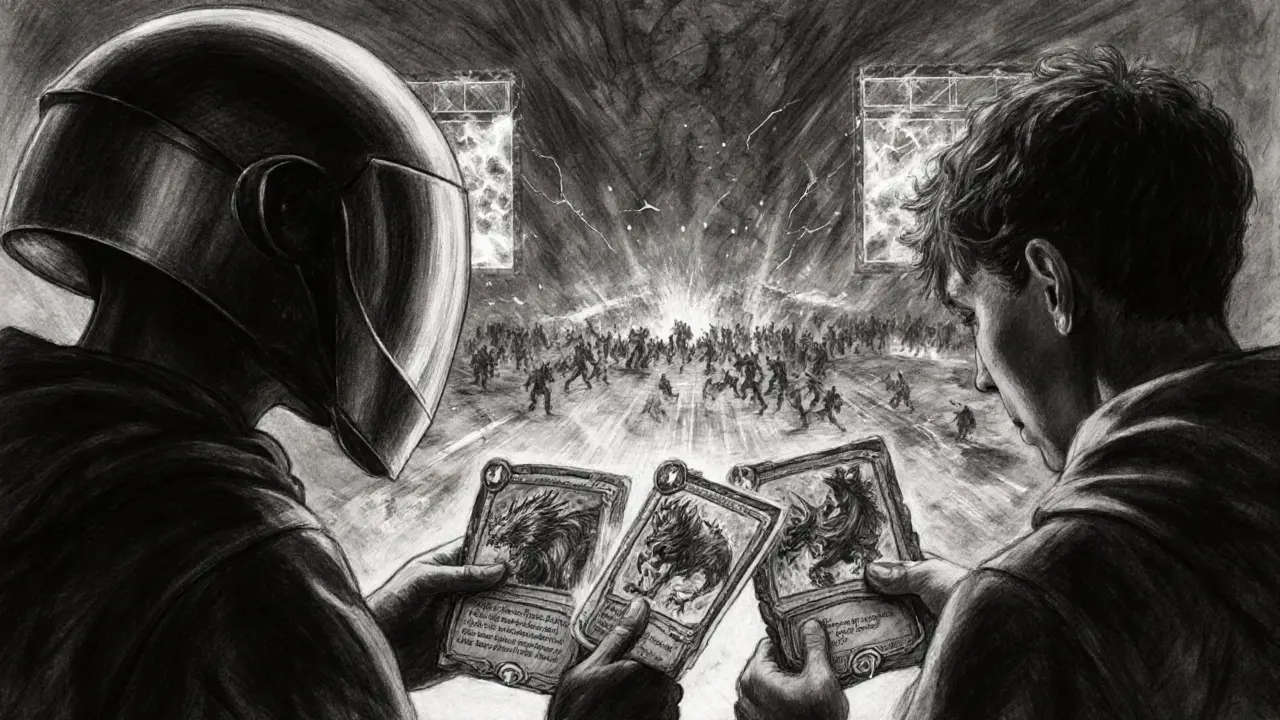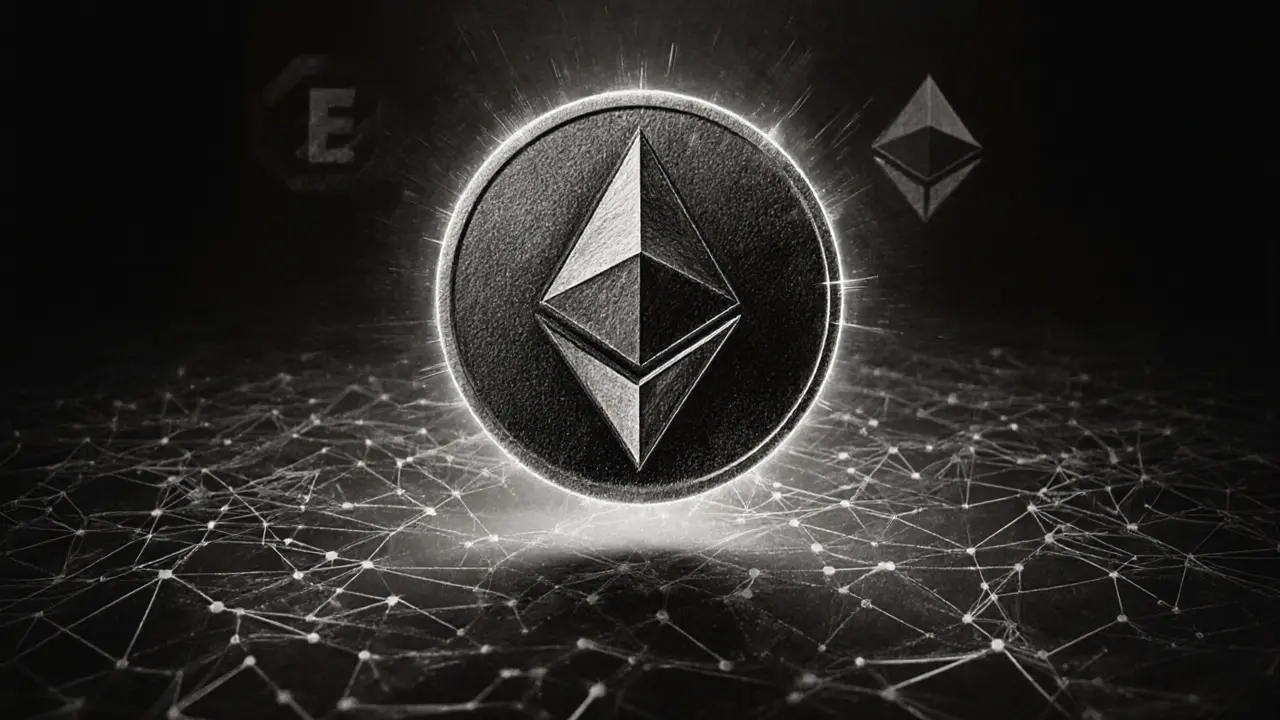SHIRYO Token Calculator
Token Information
Max Supply: 1 Quadrillion (1,000,000,000,000,000)
Circulating Supply: ~965 Quadrillion
Reflection Rate: 3% per transaction
Burn Rate: 10% of NFT sales
Calculate Reflections
Calculation Results
How It Works
- 3% of every transaction is reflected to all token holders
- Your share of the reflection depends on your percentage of total supply
- This calculator estimates potential earnings from reflections
Ever stumbled across a tiny token called Shiryo crypto and wondered what the hype is about? This guide breaks down the basics, the game it powers, the tokenomics that keep it ticking, and where you can actually buy it. By the end you’ll know if Shiryo is just another meme coin or a genuine play‑to‑earn platform worth watching.
Quick Facts
- Shiryo (SHIRYO) is an ERC‑20 token built for an NFT‑based trading‑card game.
- Maximum supply: 1quadrillion tokens; circulating supply ≈ 964.9quadrillion.
- 3% of every trade is reflected to holders; 10% of NFT sales are used to burn tokens.
- Contract is renounced and liquidity locked for over 4,000 days.
- Primarily trades on Uniswap V2 (ETH pair) and MEXC (USDT pair).
What is Shiryo?
Shiryo (SHIRYO) is a community‑focused ERC‑20 cryptocurrency that serves as the native currency for an NFT‑based trading‑card game built on the Ethereum blockchain. The team behind it calls themselves a blend of DeFi geeks and traditional trading‑card enthusiasts, aiming to fill the gap between pure meme tokens and utility‑heavy gaming projects.
The Game Ecosystem
The heart of Shiryo lies in its NFT trading‑card game where players collect, battle, and trade digital creatures called ‘beasts’ along with element cards. Each card is an NFT, meaning ownership is recorded on‑chain and can be sold or transferred like any other crypto asset. Players also receive an animated avatar that unlocks future add‑ons and serves as a passport to weekly competitions.
The game is designed for both casual players and hardcore collectors. If you prefer low‑risk play, you can keep your avatars safe and still earn small token rewards. If you’re a competitive gamer, you can stake SHIRYO in battles and aim for the weekly top‑performer prizes.
Tokenomics Explained
Understanding how SHIRYO moves is key to judging its long‑term value.
- Supply: Fixed at 1quadrillion tokens, with about 965quadrillion already in circulation.
- Reflection mechanism: 3% of every buy or sell is automatically redistributed to existing holders. If your wallet holds 1% of total supply, you’ll receive roughly 1% of the 3% pool on each transaction.
- Burn model: 10% of all NFT sales are used to buy back and permanently remove SHIRYO from supply, creating a deflationary pressure over time.
- Liquidity lock: The liquidity pool on Uniswap is locked for over 4,000 days, preventing the team from pulling funds.
- Contract renouncement: The smart contract has been renounced, meaning the developers can’t modify the code after deployment.
These mechanisms aim to reward long‑term holders while slowly shrinking the token base, a model common among “reflection” coins.

Security & Audits
Crypto projects often stumble on security, but Shiryo has taken a few steps to reassure investors.
- Contract renouncement (see above) eliminates the risk of a malicious upgrade.
- Liquidity is locked in a time‑locked smart contract; the lock expires beyond 4,000 days, offering strong protection.
- The code underwent a Certik security audit and is covered by the Skynet upgrade for continuous monitoring.
- 24/7 contract monitoring via Certik’s Skynet service adds an extra layer of oversight.
While these steps are reassuring, no audit guarantees immunity from future bugs, especially as the game’s code evolves.
Where to Trade & Market Snapshot
Shiryo isn’t listed on major centralized exchanges yet. Most of the action happens on decentralized platforms.
| Exchange | Pair | Price (USD) | 24‑Hour Volume (USD) | Share of Total Volume |
|---|---|---|---|---|
| Uniswap V2 | SHIRYO/WETH | 2.24e‑13 | 1,284.65 | ≈85% |
| MEXC | SHIRYO/USDT | 2.24e‑13 | 160.86 | ≈15% |
Current market cap sits around $3.9million, with a 24‑hour price movement of roughly +4% according to the latest CoinLore data. Because the token price is measured in the low‑double‑exponential range, even a tiny uptick translates into huge percentage swings.
Risks and Outlook
Every crypto project carries risk, and Shiryo is no exception.
- Development delays: The original roadmap aimed for a 2022 game launch, but as of 2025 the game remains in beta. Delays can erode community confidence.
- Liquidity concentration: Over 85% of trading volume is on a single Uniswap pool, making price manipulation easier.
- Speculative price forecasts: Models predict a price of $1.1e‑11 by year‑end 2025-a 3,600% jump-but such numbers are highly speculative and depend on broader market sentiment.
- Competition: The play‑to‑earn space is crowded with projects like Axie Infinity, Yield Guild Games, and numerous meme‑token‑driven games.
On the upside, the combination of a deflationary token and an actual gaming ecosystem gives Shiryo a use‑case that many meme tokens lack. If the game gains traction, token demand could rise alongside player adoption.
Checklist for New Users
- Set up a secure Ethereum wallet (MetaMask or Trust Wallet).
- Buy a small amount of ETH or USDT for gas fees.
- Swap ETH/USDT for SHIRYO on Uniswap V2 or MEXC.
- Enable the token’s contract address (0x...INSERT‑ADDRESS…) in your wallet to view balances.
- Consider staking or participating in the game only after you’ve read the latest whitepaper and community updates.
- Never invest more than you can afford to lose-high‑supply tokens are volatile.
Frequently Asked Questions
What blockchain does SHIRYO run on?
SHIRYO is an ERC‑20 token, so it lives on the Ethereum network and uses the same gas‑fee system as other Ethereum assets.
How are reflections distributed?
Every transaction takes a 3% fee; that fee is automatically split among all token holders proportionally to their holdings. The process is handled by the smart contract, so no manual claim is needed.
Is the contract safe to interact with?
The contract has been renounced, liquidity is locked for >4,000 days, and it passed a Certik audit with the Skynet monitoring service. While those are good signs, any interaction carries inherent risk.
Where can I buy SHIRYO?
The token is primarily traded on Uniswap V2 (SHIRYO/WETH pair) and on MEXC (SHIRYO/USDT pair). You’ll need an Ethereum‑compatible wallet and some ETH for gas.
What is the future of the Shiryo game?
The roadmap is still a work in progress. The team aims to launch the full NFT‑TCG soon, but exact dates haven’t been announced. Community updates on Discord and Twitter are the best source for the latest milestones.


Shiryo’s whole vibe is built around its NFT card game, so if you’re already into trading‑card decks, the token gives you a way to earn while you play. The 3% reflection on every trade means even passive holders see steady drip income, which is pretty sweet for a community‑driven project.
This whole thing smells like a hype pump; a token with a quadrillion supply can’t possibly hold real value, it’s just a gimmick for greedy folks.
The reflection mechanism, though modest at 3%, establishes a continuous reward loop for stakeholders; as the transaction volume scales, the cumulative reflections could become a notable revenue stream for long‑term participants.
Honestly, the delayed game launch is the biggest red flag; you can’t sustain a token without the promised utility, and the beta phase dragging on doesn’t inspire confidence.
if u wanna calc the reflections u just take your holdings ÷ max supply × 3% of each trade, basically u get a tiny slice of every swap. 4% of the volume is actually pretty decent for a token that’s still in beta.
Adding to that, the liquidity lock for over 4,000 days means the team can’t just rug pull the pool, which adds an extra layer of security for us holders.
When considering the philosophical underpinnings of a deflationary token, one might ask: does the act of burning truly create scarcity, or does it merely shift perceived value? In Shiryo’s case, the burn rate tied to NFT sales suggests a symbiotic relationship between game adoption and tokenomics; the higher the game engagement, the greater the token scarcity, which could drive price appreciation. Yet, without robust adoption, the burn mechanism merely reduces supply without demand.
The critique of delayed development is valid; a project that promises a game but stalls at beta forfeits credibility. Moreover, the concentration of volume on a single Uniswap pool invites manipulation, which is a systemic risk for any token of this class.
While the contract renouncement and Certik audit provide some reassurance, investors should still monitor for unforeseen bugs, especially as new game features are integrated into the smart contracts.
Looks like another meme‑coin in disguise.
Oh, great, another token to fill my portfolio with existential dread.
While the sentiment may lean toward skepticism, the contractual safeguards-renounced ownership and extensive liquidity lock-position Shiryo more securely than many speculative assets.
We could argue that value lies not in the token itself but in the community narrative that surrounds it; if the community believes, the token gains a kind of social proof that can be self‑fulfilling.
👍 Good stuff!
Our nation deserves projects that actually benefit real people, not these overpriced JPEGs.
From a tokenomics standpoint, Shiryo implements a classic reflection model coupled with a burn mechanism, effectively creating a dual‑supply adjustment methodology. The 3% transaction fee redistributed to holders operates as an automatic yield farm, incentivizing accumulation rather than liquidation. Conversely, the 10% allocation of NFT sales toward token buy‑backs introduces an exogenous deflationary pressure, reducing circulating supply independent of market trades. This bifurcated approach can, theoretically, stabilize price volatility by aligning incentives across both token holders and game participants. However, the efficacy of such a system hinges on sustained transaction volume; low liquidity would diminish reflection payouts, rendering the yield negligible. Moreover, the concentration of liquidity on a solitary Uniswap pool amplifies exposure to price manipulation, a risk mitigated only by the 4,000‑day lock, which, while reassuring, does not preclude coordinated whale activity. The renounced contract eliminates upgradeability risks but also removes the possibility of retroactive bug fixes, placing the onus entirely on initial code robustness. Integration with the NFT TCG adds utility, yet the game’s beta status raises concerns about user acquisition and long‑term engagement. In practice, if the game garners a critical mass of players, token demand could outpace supply, driving price appreciation. Conversely, a stagnant player base may result in a supply‑heavy token with limited upside. Therefore, investors must weigh the interplay of reflection yields, burn‑induced scarcity, liquidity depth, and game adoption trajectories when assessing Shiryo’s risk‑reward profile.
Hey team, keep the hype balanced-remember that sustainable growth beats flash‑in‑the‑pan bursts every time. 🚀
Let’s be clear: the reflection payouts, while modest, can compound significantly over time, especially if the community rallies around the game’s upcoming release. This is not just hype; it’s a viable passive income stream for engaged holders.
We should champion projects that put national interests first, but only if they prove real economic value.
Honestly, the token’s flashy marketing masks a lack of substance; without a solid product, it’s just another speculative bubble waiting to burst.
Optimism is fine, yet it’s crucial to stay grounded-track the milestones and adjust expectations accordingly.
Could someone clarify how the burn rate directly influences the token’s scarcity model? I’m curious about the long‑term impact.
Shiryo’s journey is a fascinating blend of gaming culture and decentralized finance, offering a vibrant space for creators and collectors alike.